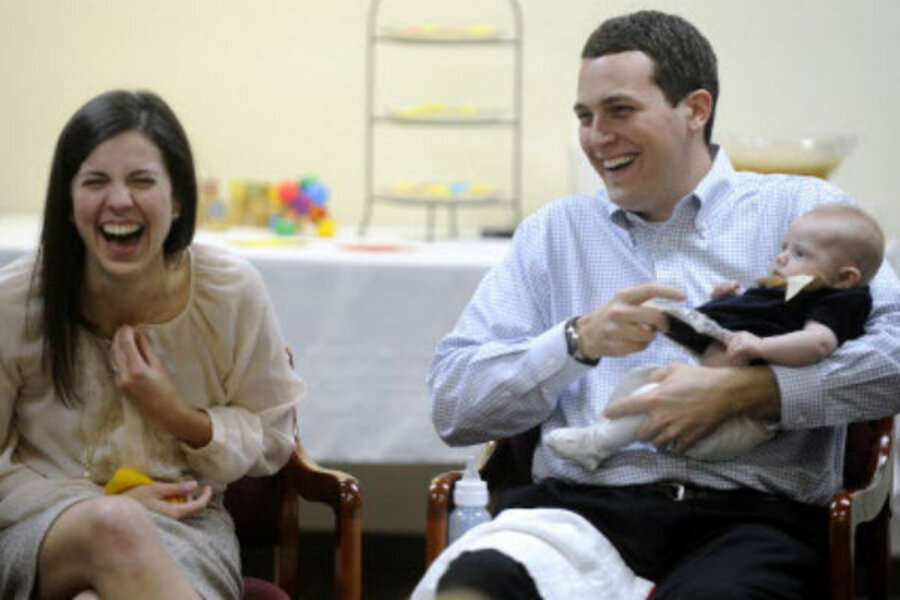Web transforms adoption: Closed adoption over, commodification in
Loading...
The Internet has all but nailed shut the era of the closed adoption, says a new report from the Evan B. Donaldson Adoption Institute, “Untangling the Web: The Internet’s Transformative Impact on Adoption.” With social media sites such as Facebook – not to mention all varieties of online databases and archives – interaction between an adopted child and his or her birth parents can come more quickly, privately, and unexpectedly than ever before.
Meanwhile, the report says, unregulated websites are increasingly competing with traditional adoption practitioners, a trend that has created a growing “commodification” of adoption and “a shift away from the perspective that its primary purpose is to find families for children.”
And at the same time, tens of millions of people across the globe are tapping into the Internet to find support for any number of adoption-related concerns or interests. These can range from grappling with the decision of whether to put a child up for adoption in the first place to struggling to raise a child with special needs to figuring out the best way to host Christmas brunch for a kid’s parents, her biological parents, and her siblings who are being raised by someone else all together.
Overall, the Internet’s impact on adoption has been massive. It has also, this report says, been essentially unstudied – and unregulated.
I called up Adam Pertman, executive director of the Evan B. Donaldson Adoption Institute, to ask him more about all of this, and about why his organization decided to take such a broad look at the big picture of the Internet and adoption.
The basic answer, he said, was that nobody else had done it.
Although the Internet was clearly impacting nearly every facet of adoption, and the millions of people across the world whose lives are touched by the practice, there are few if any macro studies, he explained. There haven’t been policy recommendations, white papers, legal adjustments, educational programs – any of those responses that you might expect from a field in transition.
“We haven’t begun to wrap our arms around what the Internet means in this realm,” he told me. “Sure, everybody in every field understands that the Internet is having a transformative impact. We know that. That’s not the shocker. But in many other fields there is research – people are discussing what the rules should be, whether [the field is] pornography or taxes or book sales. That isn’t happening [with adoption]. And this affects tens of millions of people – deeply vulnerable people – in their deeply personal lives.” [Editor's note: Mr. Pertman's original quote was revised, at his request, to clarify that "many," not all, are deeply vulnerable people.]
So this report is intentionally broad, Mr. Pertman said. It has some general recommendation for policy makers and those working in the adoption field (it suggests convening to explore these Internet-prompted issues further and developing new guidelines and educational standards) but it primarily set out to show the scope of the changes.
“We have to see what the elephant looks like,” he says.
The next step, he says, will be digging deeper into particular facets of the Internet-adoption realm.
Take the issue of search and reunion.
The trend over the past few decades has been toward open adoptions, those arrangements where there is some level of supervised contact between children and their biological parents. (A recent survey by the Adoption Institute found that through 100 infant adoption programs in the US, only 5 percent of the adoptions were completely closed.) But the Internet has basically taken control away from adoptive parents, child welfare agencies or any other parties who want to regulate these interactions.
Within a few clicks a web-savvy child can find a birth parent. Or, more scarily, an abusive biological parent can find their child.
“Parents need to be guided to discuss how to manage electronic communication long before their children are old enough to reach out or become found,” the report says.
Adoptive parents should be prepared for this sort of contact, as well.
“The list of positive, negative and complicated changes occurring in the world of adoption as a result of the Internet goes on and on, with many already in place and others still evolving,” the report says. “The common denominator among them is that they are not best practices derived from lessons learned from research and experience; rather, overwhelmingly, they are transformations that are happening simply because new technology enables them to happen.”








